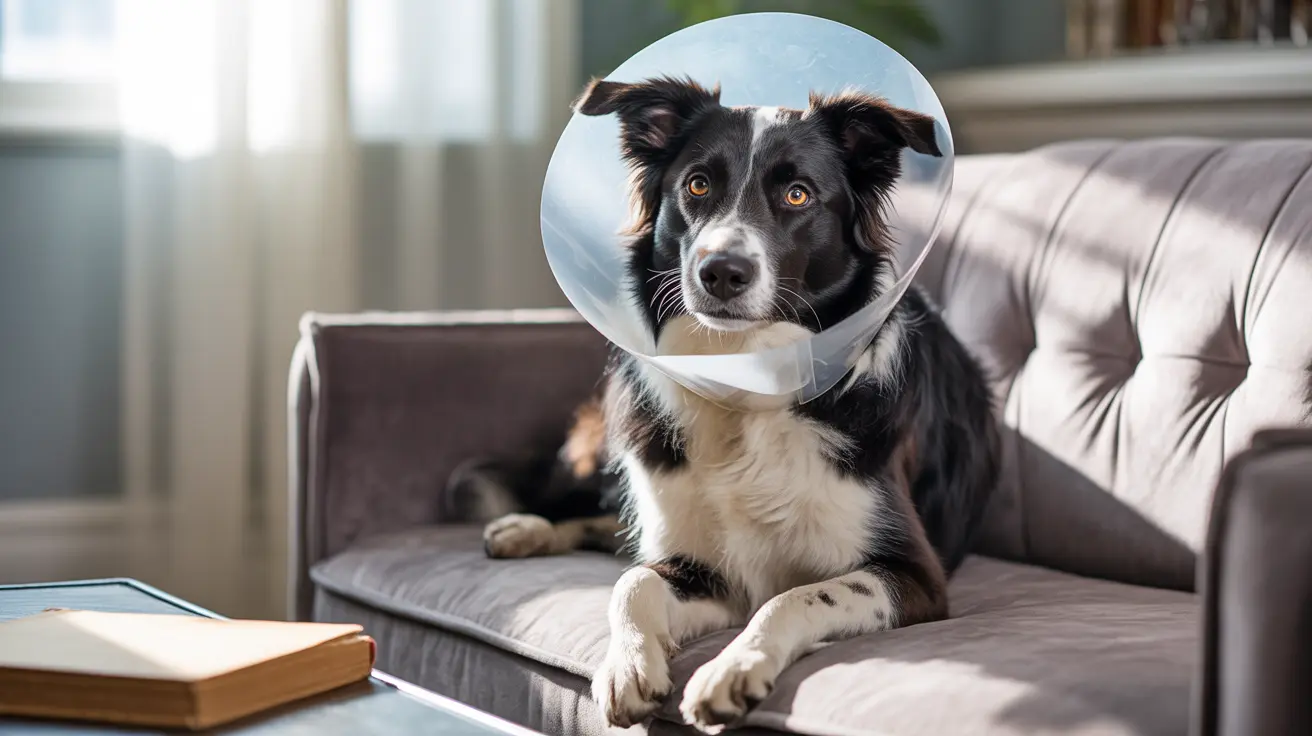If you've recently had your dog neutered, you're likely wondering about the proper timeline for removing their protective cone (E-collar). While your furry friend might not be a fan of wearing this protective device, understanding when it's safe to remove it is crucial for ensuring proper healing and preventing complications.
In this comprehensive guide, we'll explore the essential timeline for cone removal after neutering, signs of proper healing, and important considerations to keep in mind during your dog's recovery process.
Standard Timeline for Post-Neuter Cone Removal
The general rule of thumb is to keep the cone on your dog for 10-14 days after neutering surgery. This timeline allows for proper healing of the surgical site and minimizes the risk of complications. However, individual healing times may vary based on factors such as your dog's age, overall health, and activity level.
Signs That Indicate Safe Cone Removal
Before removing your dog's cone, look for these positive healing indicators:
- No redness or swelling around the incision site
- No discharge or drainage from the wound
- The incision appears fully closed and dry
- Your dog shows no interest in licking the area
- Sutures have been removed (if non-dissolvable ones were used)
Managing Your Dog's Recovery Period
During the healing process, proper management is essential for a successful recovery:
- Keep your dog's activity level low
- Monitor the incision site daily
- Maintain the cone's position 24/7 unless supervised
- Follow all post-operative care instructions from your veterinarian
- Schedule and attend follow-up appointments as recommended
Special Considerations for Cone Usage
While wearing the cone, your dog may need help adjusting to daily activities:
- Assist them with eating and drinking if necessary
- Guide them through doorways and around furniture
- Provide comfort and reassurance during the adjustment period
- Consider cone alternatives only with veterinary approval
When to Contact Your Veterinarian
Some situations require immediate veterinary attention:
- Excessive swelling or redness at the surgical site
- Reopening of the incision
- Signs of infection (pus, odor, or increased pain)
- Behavioral changes or lethargy
- Loss of appetite lasting more than 24 hours
Frequently Asked Questions
How long should I keep the cone on my dog after neuter surgery?
Keep the cone on for 10-14 days after surgery, or as directed by your veterinarian. This timeline ensures proper healing and prevents complications from licking or biting the incision site.
When is it safe to remove the cone from my dog after neutering?
It's safe to remove the cone when the incision is fully healed, typically after 10-14 days, and only with your veterinarian's approval. Look for complete closure of the wound with no redness, swelling, or discharge.
What signs show that my dog's neuter incision is fully healed and the cone can come off?
Signs of proper healing include a dry, closed incision with no redness, swelling, or discharge. The skin should appear normal in color, and your dog should show no interest in licking the area.
Can I remove the cone during my dog's recovery for eating or supervised breaks?
While some veterinarians may allow brief supervised breaks after 5-7 days, it's generally safest to keep the cone on continuously. If removed for eating, maintain constant supervision and replace it immediately afterward.
Are there alternatives to the traditional cone for protecting my dog's incision after neutering?
Yes, alternatives include inflatable collars, soft e-collars, and post-surgical recovery suits. However, always consult your veterinarian before using any alternative, as some may not provide adequate protection for your dog's specific situation.
Conclusion
While the cone may be temporarily uncomfortable for your dog, following proper post-neuter care guidelines and waiting the full 10-14 days before removal is crucial for successful healing. Always consult with your veterinarian before removing the cone, even if the incision appears healed, to ensure the best outcome for your pet's recovery.






